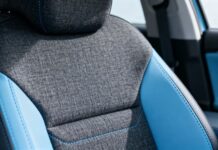Searching for a fabric that is not only opulent and cozy but also eco-friendly and sustainable? You just need to consider modal fabric! Now, what exactly is modal fabric? You will learn all there is to know about this kind of cloth from this blog article today!
So, modal is the way to go if you’re searching for a fabric that blends sustainability, style, and comfort! Experience the richness of modal fabric for yourself and join the eco-friendly fashion revolution.
Modal Fabric: What Is It?
The pulp of beeches is used to make modal fabric. It is a rayon fabric, which is a kind of cloth that has been treated with another material to improve its qualities.
The finished product stands out from other rayon fabrics due to its remarkable flexibility and durability. Modal material also exudes luxury because of its plush feel and greater price.
In addition to apparel products like T-shirts, underwear, pajamas, and sportswear, this adaptable fabric may also be found in towels and bed linens. Its wide use may be ascribed to both its visual allure and the fact that it comes from regenerating plants. When compared to many other synthetic materials, this makes it an excellent option.
How Do They Make Modal Fabric?
The intricate process of making modal fabric starts with beech trees that have been harvested. This is the general process by which producers turn wood pulp into this opulent fabric:
- Utilize chemicals to convert beech wood pulp into semi-synthetic cloth.
- When the wood fibers are soaking, use chemicals like carbon disulfide and sodium hydroxide to break down their structure.
- The pulp is transformed into sodium cellulose xanthate, a thick, viscous liquid, by this soaking process.
- After that, the liquid is forced through a spinneret to become fibers.
- To create a flexible and long-lasting fabric, solidify these fibers in an acidic solution.
- Before the material is woven or knit into modal fabric, it undergoes yarn production and coloring.
The Properties of the Modal Fabric
Modal fabric has a number of advantageous characteristics. It gives clothes an opulent sense since it is very soft to the touch. Modal, which is renowned for being breathable, keeps you cool by promoting airflow.
It is very resilient and retains its color and form even after several washings and extended usage. Additionally, garments made of modal maintain the same size after washing since it doesn’t shrink as much as certain other materials.
Finally, even after many washes and wears, the dye adheres to the fabric with remarkable permanence.
Sensitivity
The extraordinary softness of modal fabric gives it an opulent touch. Like smooth fabrics, this unmatched quality offers modal apparel a significant edge.
Its natural softness stays true over time, even after several cycles of washing and wearing.
This velvety texture benefits more than just clothes. The modal fabric used to make towels and bed linens is another home item that has a gentle touch. therefore raising the consumers’ level of comfort.
This material is excellent for underwear, pajamas and other intimate apparel since it lasts a long time. Due to its extreme comfort, it’s also excellent for exercising, much like yoga pants or cycling shorts.
Breathability
Modal fabric is well known for being very comfortable due to its ability to breathe. In contrast to traditional cotton, modal permits unrestricted air circulation. This makes it a suitable material for athletics and activewear, such as T-shirts and yoga trousers.
Wearing the material is made more pleasurable by this function, which keeps you cool by allowing heated air to escape your body. The natural modal derived from beech trees that have been chopped down contributes to this positive attribute.
Furthermore, even when air is twisted or braided, modal maintains air flow since it does not stretch. This is an additional reason why the fashion industry adores it!
Sturdiness
In the realm of textiles, modal fabric stands out for its exceptional resilience. It is more resilient and pliable than ordinary rayon. This makes it a well-liked option for garments that need to withstand heavy use or repeated washings.
Beyond its durability, no matter how often you wear or wash it, this adaptable fabric doesn’t pill or wrinkle. Modal is excellent for daily usage due to its extreme durability.
For this reason, modal fabric ensures that your favorite bed linens or pajamas hold up over time without compromising on comfort or design.
Reduced Resistance
Modal fabric is unique in that it resists shrinkage. It is not deformable or floppy like many other fabrics, even after several washing cycles. The long fibers and tight weave used in the creation of modals are responsible for this important feature.
Over time, you can count on your modal clothing to fit you consistently. They are a sensible option for clothes that are often laundered and used frequently because of this feature.
This strong and sturdy material makes shrinking clothing a thing of the past for your wardrobe.
Color Preservation
Modal fabric is praised for keeping color better than other textiles. Its vivid colors do not bleed or fade even after repeated washings and exposure to sunshine. This sturdy characteristic guarantees that products manufactured from this opulent fabric always seem brand-new.
The color-holding properties of the semi-synthetic fabric prolong the life of your clothing. You’ll see that the modal material maintains its brightness and colorfastness even after prolonged usage.
In the fashion sector, modal is a popular option because of its strength. Modals may be used to create stylish clothing that is long-lasting.
Is Modal Fabric Safe for the Environment and Sustainable?
In any discussion on the sustainability of modal fabric, one must take all sides into account. It is biodegradable and made from renewable beech trees, on the one hand. However, the process of producing it may include dangerous chemicals and result in the loss of forests.
However, some businesses are aiming for greener alternatives that use less water and produce fewer carbon emissions. Because of all of them, it is a less impactful substitute than conventional viscose or rayon.
Destroying Forests
For all of its eco-friendliness, modal fabric manufacture may result in the loss of forests. Beech trees are often harvested by manufacturers for the pulp that goes into making this semi-synthetic fabric.
Compared to other textile plants, these trees demand less water and are a sustainable resource. However, overharvesting or incorrect harvesting practices may seriously harm forests. Thus, we need environmentally friendly substitutes like TENCEL Modal.
The influence on the environment is reduced by this method. Furthermore, it contributes to preserving the equilibrium of the world’s forest cover.
Chemical Utilization
Many different chemicals are used in the process of making modal fabric. Carbon disulfate and sodium hydroxide are used to convert the pulp of beech trees into useful fiber. These compounds are essential to the solvent spinning process that helps create modal fabric.
Even though this substance is semi-synthetic, there are concerns over how it may affect the environment. This kind of process is also present in other textiles, such as Lyocell. However, it uses non-toxic cellulose solvents in a closed-loop solvent system, which makes it somewhat more environmentally friendly.
This disparity highlights how important chemical consumption is in figuring out how sustainable certain textiles are.
Eco-Friendly Substitute
In the realm of textiles, modal is a sustainable fabric that shines. This biodegradable material, which is made from pulp from beech trees, grows with significantly less water than other plant sources that are often used to produce textiles.
Its semi-synthetic composition achieves a harmonious equilibrium between protecting our natural resources and meeting consumer demand for high-end, long-lasting products.
Its durability and strength add to its allure for the environment. Because modal fiber is durable and won’t deteriorate over time, it eliminates the need for regular replacements, which adds to the production of trash.
Over time, less output results in decreased carbon emissions since there is less replacement. Modal is better for the environment since it doesn’t need additional coatings or procedures because it absorbs 50% more water than cotton.
Comparing Modal with Other Fabrics
Explore the fascinating world of fabric comparison by contrasting modal with cotton, viscose, and lyocell. Every fabric has certain advantages and disadvantages of its own. See why modal is becoming more and more popular for sportswear, activewear, and upscale apparel in our in-depth review.
Viscose vs Modal
Although modal and viscose textiles are derived from plants, they vary greatly from one another. Compared to traditional viscose, modal is notable for its strength, flexibility, and increased absorbency rate. This kind of high-modulus rayon stays strong in the presence of moisture.
Conversely, traditional viscose becomes weaker in wet environments, which over time may cause stretching or drooping.
However, they also have appealing qualities in common, such breathability, which makes them appropriate for both casual daily wear and athletics. Additionally, modal is more sustainable than ordinary viscose. It uses fewer chemicals, water, and land.
Comparing Modal with Lyocell
Two common semi-synthetic fabric types that are often used in the fashion industry are modal and lyocell. Beech tree pulp is the source of modal, which is well-known for being very soft and breathable. It often combines well with other fibers to improve flexibility and durability, such as spandex and cotton.
Conversely, Lyocell is notable for its silky, smooth feel and is often used alone rather than combined with other materials. Its wood pulp composition gives it comparable moisture-wicking qualities as modal. Because of this, both textiles are excellent options for sporting or any clothing that is often wet or sweaty.
Although they may be compared, each kind of cloth still has distinctive qualities that set them apart from one another.
Cotton vs. Modal
When it comes to benefits, modal fabric is clearly superior than regular cotton. It’s a more environmentally friendly option since its processing uses fewer water and chemicals. Unlike cotton, which tends to absorb moisture, modal, which is known for its breathability and moisture-wicking properties, can keep you cool and dry.
Additionally, modal is more durable than cotton. It resists shrinking even after many washing and keeps its form for a significantly longer period of time. Furthermore, unlike cotton, which becomes scratchy after repeated washings, modal’s softness doesn’t disappear with time.
Modal is a desirable substitute in the textile sector because of these attributes.
The Prospects of Modal: Current Advancements
Transitioning the textile industry into a new age is being driven by modern breakthroughs in modal manufacturing. Modern scientific discoveries are also propelling a change in production practices toward those that are more environmentally friendly. To further lessen their influence on the environment, several firms are now including recycled or bio-based elements into their modal textiles.
These advancements in environmentally friendly methods demonstrate that modal’s future is bright for individuals who value protecting the environment and high-quality textiles, alike.
In summary
In the textile business, modal fabric combines sustainability with elegance. This eco-friendly semi-synthetic fabric sets a new benchmark in terms of manufacturing methods. Due to its special qualities, it may be used for a wide range of purposes and has the potential to revolutionize sustainable home and fashion products in the future.
Modal material is a true advancement toward responsible and fashionable living.



































